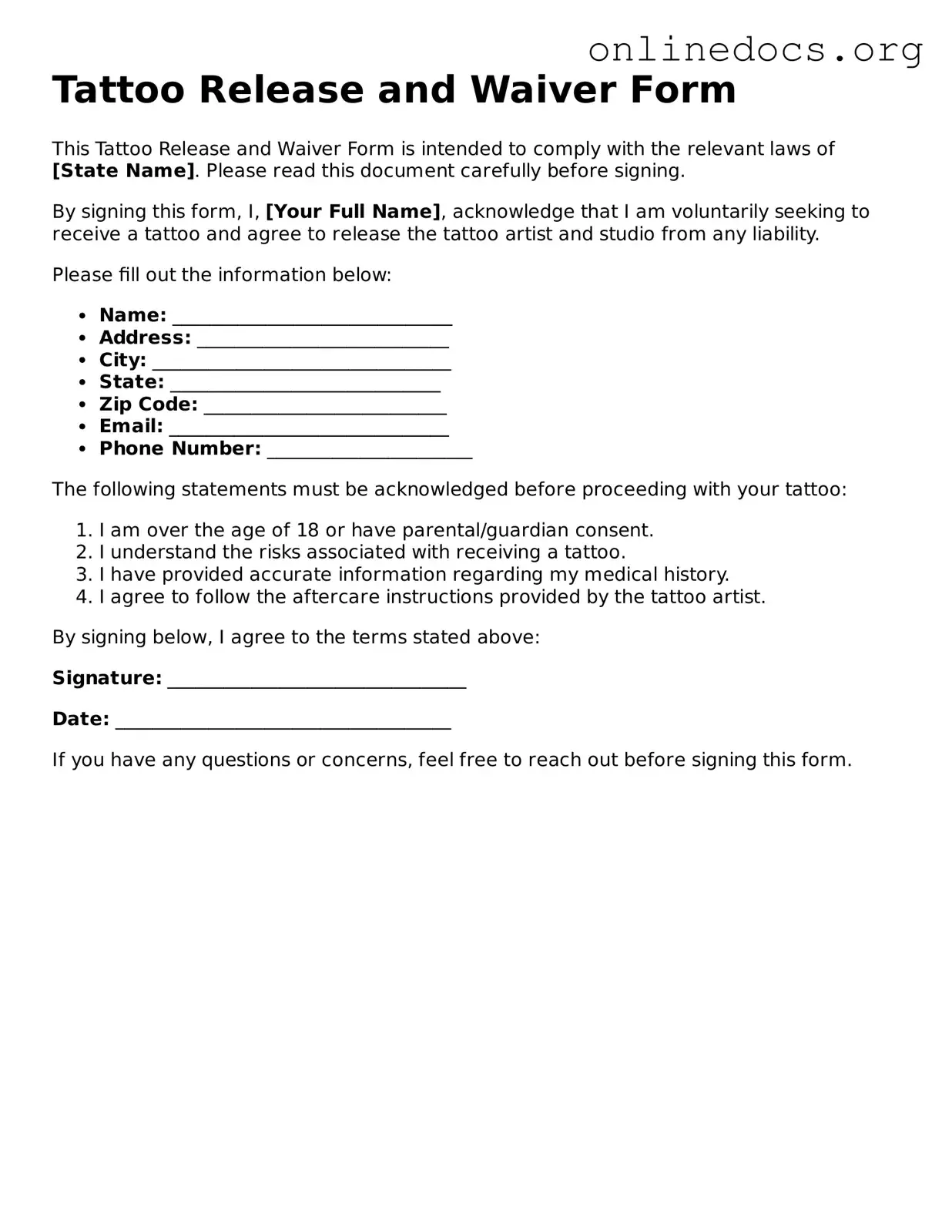A Photo Release form is similar to a Tattoo Release form in that both documents grant permission for the use of an individual's likeness. When someone signs a Photo Release, they allow photographers or companies to use their images in promotional materials, advertisements, or publications. This ensures that the person in the photo cannot later claim that their image was used without consent, just as a Tattoo Release protects the artist's right to use images of the tattoo they created.
A Model Release form shares similarities with a Tattoo Release form as well. This document is commonly used in the fashion and modeling industries. When a model signs a Model Release, they permit the photographer and other parties to use their images for commercial purposes. This is akin to a Tattoo Release, where the tattoo artist seeks permission to showcase their work on the client's skin, ensuring that both parties have clear rights regarding the use of images.
An Art Release form is another document that resembles a Tattoo Release. Artists often use this form to gain permission from clients to reproduce their artwork in various media. For instance, if a client wishes to use a painting for merchandise, the Art Release allows the artist to specify how their work can be used, similar to how a Tattoo Release delineates the use of tattoo images.
A Waiver of Liability is also comparable to a Tattoo Release form. In this case, individuals sign a Waiver of Liability to acknowledge the risks associated with an activity, such as extreme sports or physical fitness classes. By signing, participants agree not to hold the organizers responsible for injuries. Similarly, a Tattoo Release often includes a waiver that informs clients about potential risks associated with getting a tattoo.
A Consent Form for Medical Procedures bears resemblance to a Tattoo Release form, particularly in the context of informed consent. Patients must sign consent forms before undergoing medical treatments or surgeries, acknowledging that they understand the risks involved. Just as individuals consent to medical procedures, tattoo clients must agree to the process and potential risks associated with getting a tattoo.
In addition to the various release forms mentioned, understanding the implications of a Waiver of Liability form is crucial for artists and clients alike. This document ensures that both parties are aware of the inherent risks involved in their engagements, similar to how a Tattoo Release form functions. For those seeking more information on waivers, the California Release of Liability form is essential, which can be found at californiadocsonline.com/release-of-liability-form.
A Video Release form is akin to a Tattoo Release as both documents address the use of a person’s image. When individuals appear in videos, a Video Release grants permission for the creators to use those recordings for various purposes, such as marketing or educational content. This mirrors the Tattoo Release, where the tattoo artist seeks the client's approval to use images of their tattoo in similar contexts.
A Licensing Agreement can also be compared to a Tattoo Release form. This document typically allows one party to use another party's intellectual property, such as artwork or designs, under specific conditions. In the case of tattoos, a Tattoo Release serves as a form of licensing, permitting the tattoo artist to use images of the tattoo for promotional purposes while protecting the client's rights as well.
A Release of Claims document is similar to a Tattoo Release in that it protects one party from legal claims made by another. When individuals sign a Release of Claims, they agree not to pursue legal action against the other party for specific issues. In the context of a Tattoo Release, clients often release the tattoo artist from liability related to the tattooing process, thus protecting the artist from potential legal claims.
An Employment Release form also shares characteristics with a Tattoo Release. This document is used when an employee agrees to allow their employer to use their likeness for promotional purposes. Similar to a Tattoo Release, it ensures that the employer has the right to use images of the employee without fear of legal repercussions, thus providing clarity and protection for both parties.
Finally, a Non-Disclosure Agreement (NDA) can be compared to a Tattoo Release form, especially when confidentiality is involved. An NDA prevents individuals from sharing sensitive information about a project or business. In the tattoo context, a Tattoo Release might include clauses that protect the artist’s designs and techniques from being disclosed, ensuring that proprietary information remains confidential.
